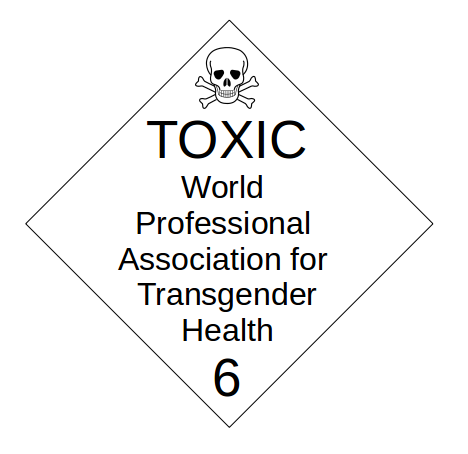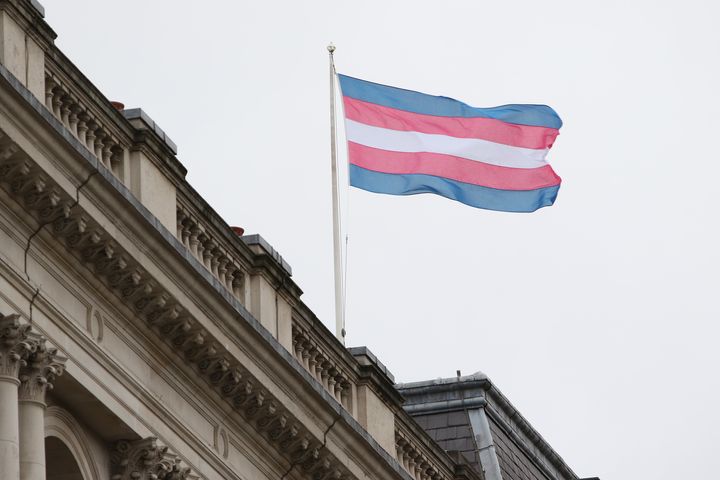A Modern Witch Hunt
The fight against women’s erasure

There have always been social lines women can not cross.
In the middle-ages, it was believing that herbs would heal better than only prayers. Now, it is saying that sex is real but gender is a social construct.
Cross the line, and you’ll be labeled a witch.
Women are currently facing a new and intense backlash to our fight for liberation—and it has uncanny parallels with witch-hunting. Many feminists have already noticed the similarities between the two moments in history, but few people might get to see a more extended comparison between them.
Feminist Current guest writer Natasha Chart wrote in 2016 a piece called “This is how they broke our grandmothers,” where she explores the destruction of women’s rights and independence at the hands of the Church.
Chart opens the piece by stating: “Once, there were witches. No. There were never witches. Not in the way men said, anyway.”
The piece explores the information brought to light in the book “Caliban and the Witch,” by Silvia Federici, where she explains how women still held some autonomy up to that moment in history, when they could still congregate, lead, and heal, before modern times.
The Church was “selling” a system to the States that proved unsustainable: land and gold accumulation in the hands of a few was making those left destitute really displeased. As Chart wrote:
“They converted heads of state… the church’s client states had a problem keeping their peasants in line, because the church and the aristocracy wanted to steal all the land and privatize it.”
Chart argues that the “Caliban and the Witch” reveals how the Church, eventually, “hit on the popular strategy of giving everything that women had to men, including the women themselves.” Therefore, it was never about women throwing curses or healing with herbs. It was about power. The witchcraft accusations were just an excuse.
How would that compare to the present moment? Last year, at University of California-Santa Barbara, students and staff members were calling for administrative action against a teaching assistant, Laura Tanner, who was labeled a bigot for tweeting against the idea that males can become females through (external) body modifications. Her Twitter header says: “A woman is someone with a female body and any personality … not a ‘female personality’ and any body. Any other definition is sexism.”
But Tanner is a mother of three and an intersectional feminist who wrote her dissertation on an “intersectional feminist analysis of child-initiated violence and the binds of mothering,” She was threatened with job dismissal and received insults like “absolute trash,” “dumb bitch,” with one person also saying “that bitch needs to die.”
The UK has also seen many cases like the one affecting Tanner, such as when Labour Party Member, Jennifer James, created a crowdfunder to challenge the government's decision to open women’s shortlists to males who identify as women.
Shortlists in political parties and many scholarships have been created in the hope it would help women regain their footing in the public life, financial independence and a say in policy making.
In fact, the main events described in Federici’s book present a very good clue about the reason why these shortlists or grants had to be created. As Chart describes, “male tradesmen coordinated boycotts of female competitors and of men who worked with them. Women who persisted in trying to engage in public trades were harassed, called “whores” or “witches,” or were even assaulted without repercussion.
Are women being stripped of their rights? Many believe so.
The same concern can be had about participation in sports. The 1992 movie “A League of Their Own” fictionalized the real story of the All-American Girls Professional Baseball League (AAGPBL), founded because league baseball executives wanted to maintain baseball in the public eye while the majority of able men were away. Until then, women had been sporadically allowed to participate in sports - whenever the men could not. This also happened in the UK during the first World War in other areas of public sphere participation.
A BBC historical piece revealed how, later, women were again forbidden to compete.
“With the war now over, a nation devastated by the loss of so many attempted to put itself back together. One by one, the factories closed and women who had been galvanised and liberated during wartime, found themselves being quietly shunted back into domestic life, returned to their "right and proper place" in society"
Women had never had their right to compete guaranteed until fairly recently. For that and also for fairness, knowing the differences in body strength in males and females, several athletes have stated their objection to the inclusion of male bodies in female categories. Whoever objects gets heavy criticism, especially if they are women, like Selina Soule, a high school student from Connecticut who is facing intense backlash for filing a federal complaint after failing to qualify for the New England regionals. Soule came after two male students who identify as girls.
The backlash they receive for objecting is very similar to what women faced after the Church stimulated the take over of women’s possessions in the middle ages.
Chart (who has, herself, been threatened for her views on women’s rights) brings forward the extent of the damage: “to be a woman in public alone was very nearly synonymous with being presumed a witch or prostituted woman,” and quotes Max Dashu's definition of the Church’s work in destroying women’s rights: diabolism - when the Church “invented” that women were witches “who worshipped and had sex with the Devil.”
The similarities keep coming. If in those times, any women who challenged the Church’s rules became witches or could be simply accused of witchcraft (like in the infamous case initiated by Elizabeth Hubbard and other girls, whose accusations included a five-year-old girl, Dorothy Good, who apparently bit them in a dream), the same can be said about the current political climate. They may be called bigots - just as people before them were called heretics. But the preferred word for those women who want to debate the implications of defining women in terms of a gender identity, instead of a material reality, nowadays, is TERF (“Trans Exclusionary Radical Feminist”).
Even the “toilet wars” aspect of the debate - the gradual dismantling of provisions separated by sex, changing to “gender-neutral” - can be compared to the aftermath of the Church’s decision to label women as witches and Max Dashu's diabolism. Chart says:
“Diabolism was so broadly defined that any female rejection of male authority was potential evidence of witchcraft. Any woman could be a witch.”
Or a TERF, it seems.
In those ancient times, things were grim for women, who could be publicly humiliated, subjugated, scorned, beaten and killed. In modern times, things are starting to look very grim too. Many women now feel unsafe to use public toilets/changing rooms that are “gender-neutral,” they fear speaking up and losing their jobs. It’s gruesome to the point that women are afraid of being called TERFs because of all the consequences it might bring, and it affects women from all walks of life - from vulnerable women in need of shelter after sexual abuse, to millionaires like J.K. Rowling.
Chart also speaks of how women, under Inquisition, survived: they isolated themselves, avoiding women’s company, and taught themselves how to “please men.” She wrote that the invention of the witch “set in motion a powerful set of social norms that remain with us,” describing how women’s public life is now: losing jobs for getting pregnant, suffering sexual harassment, public sexual shaming, physical abuse, partner killing.
Academics in several areas have been warning about the gradual loss of the ability to question (free speech) and to speak in general about the subject. In January of 2020, Selina Todd, a professor of modern history at Oxford, had to be assigned security guards to attend her lectures because she focuses her research on women’s history. Again, very similar to witch-hunting, when women could be physically punished for “expressing any social solidarity with each other”. It’s not a coincidence. Natasha also quotes Lierre Keith: “oppression is not a misunderstanding”.
Witches, like TERFs, are just women. Any woman. All women, Like Chart and Tanner, Maya Forstater (who was refused a continuation on her employment over tweets on women’s rights). Even women’s allies, like transsexual Miranda Yardley, have been accused of transphobia.
In common, these women have the belief that gender stereotypes should be abolished, and nobody should be shamed for the way they want to dress and express themselves. But women still have hundreds of issues to deal with - many of them on a biological level - and need to be able to end harmful practices done on female bodies, like Female Genital Mutilation, period shaming, diseases specific to women or that affect us differently, lack of reproductive autonomy, lack of body autonomy in general.
But if women are whoever identifies as one, even if they are born in fully functional male bodies, we can’t address issues occurring to females only, relating to their reproductive system, without being called bigots for not using gender-neutral language.
Oppression is not a misunderstanding, gender-neutral language erases women’s material reality and women’s material reality is at the root of their oppression. It’s time we address the backlash on women fighting for their rights.
Licensed under CC BY-SA 4.0, Andreia Nobre
Photo by Andre Furtado from Pexels
Enter your email below to sign in or become a 4W member and join the conversation.
(Already did this? Try refreshing the page!)




Comments